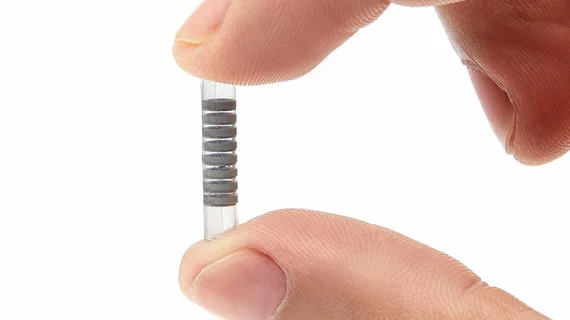Electronic blood vessels show early potential to improve treatments, empower clinicians
Electronic blood vessels show potential to play a key role in the treatment of cardiovascular disease, according to new research published in Matter.
The study’s authors noted that their custom-designed blood vessels—which combine living tissues with liquid metal-based electronics—could represent a significant step forward in tissue-engineered blood vessel technology. Potential uses in the future include improving the endothelialization process, enabling gene delivery throughout the body and more.
“The electronic blood vessel would be an ideal platform to enable diagnostics and treatments in the cardiovascular system and can greatly empower personalized medicine by creating a direct link of the vascular tissue-machine interface,” wrote lead author Shiyu Cheng, Southern University of Science and Technology in Shenzhen, China, and colleagues.
The researchers tested the safety and efficiency of their electronic blood vessels in rabbits, tracking the subjects closely with ultrasound imaging examinations. Overall, the blood vessels were found to be safe three months after implantation.
Cheng et al. said their creations showcased “excellent biocompatibility, flexibility, conductivity, mechanical strength and degradability,” noting that this breakthrough could one day “greatly benefit human cardiovascular health.”
Read the full Matter analysis here.

